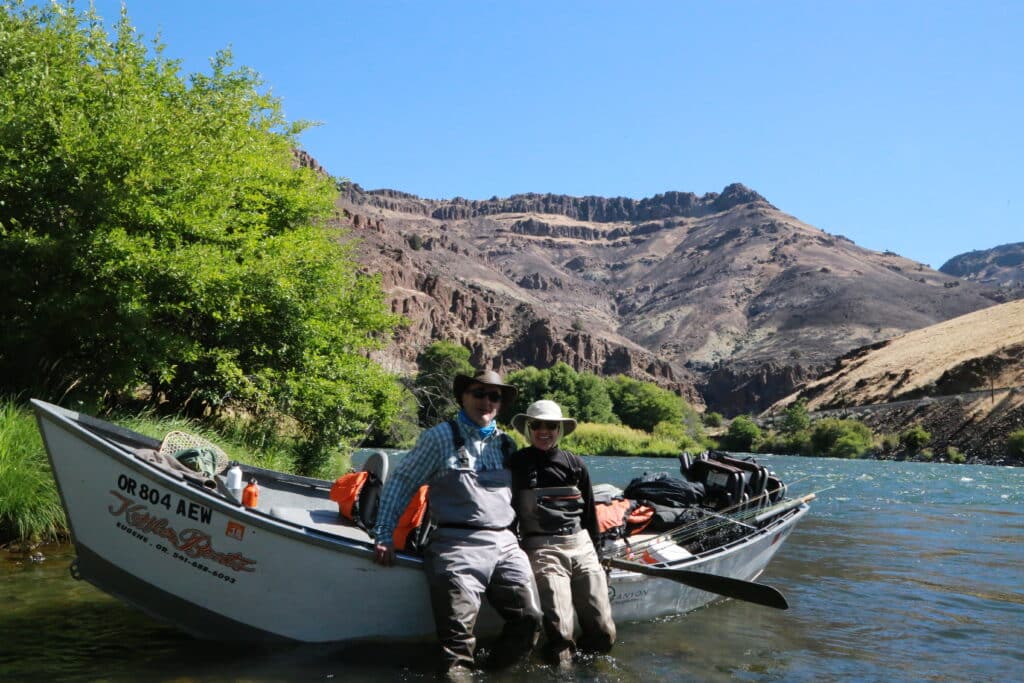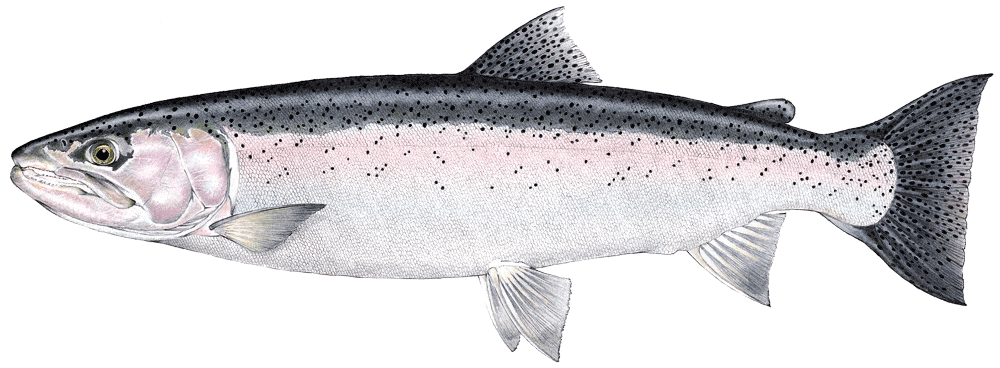

The Deschutes is a desert river flowing north through deep, rugged canyons and has some of the biggest trout water that an angler will ever see. High-side drift boats or inflatable rafts help anglers easily cover large stretches water, but numerous class III and IV rapids make the Deschutes appropriate for experienced whitewater boaters only. Keep in mind, there is no fishing from a boat allowed on the Lower Deschutes. This roughly 100 miles of river boasts abundant insect hatches, healthy populations of Rainbow Trout, and a run of Summer Steelhead. The Deschutes basin’s strain of rainbow trout, called “Redsides,” grow thick shouldered, and are surprisingly strong for their size.
A popular float with plenty of fishing time and great views is the almost 10 mile stretch from the Warm Springs boatramp to Trout Creek Campground. Beyond Trout Creek, boaters must float 30-35 miles before arriving at one of the three next possible takeouts. The first is a boat ramp at Nena Creek, followed by Long Bend, then the biggest at Harpham Flat, then finally Wapanitia. We fondly label this lengthy section of river, the “Camp Stretch”, where numerous BLM campsites dot the river’s edge, and provide boaters a chance to camp and unwind. Towering canyon walls and challenging whitewater guard the beauty and remoteness of this section of the river from over fishing. A float on this Wild and Scenic stretch of the Deschutes is our most popular guided fly fishing trip.






We email when something exciting or important happens in the shop. No spam from us ever – only fly fishing news.
Mon-Sat: 10am – 7pm
Sun: 11am – 6pm